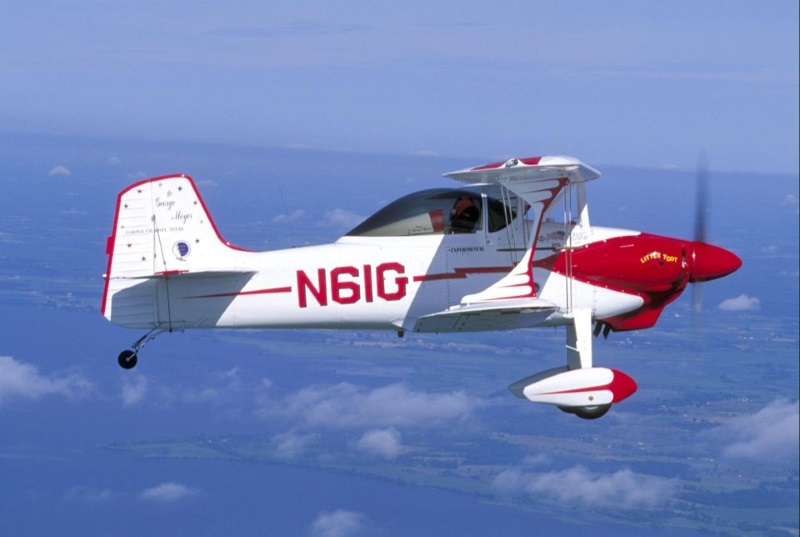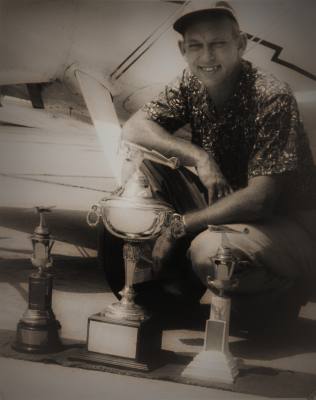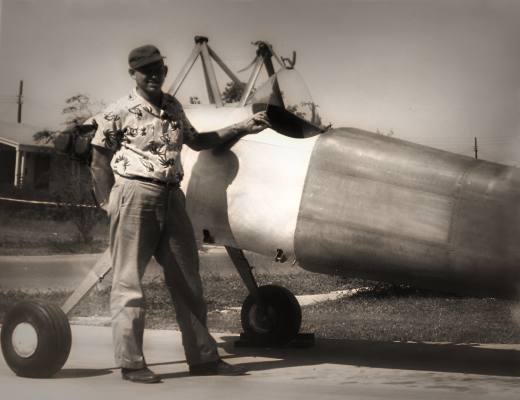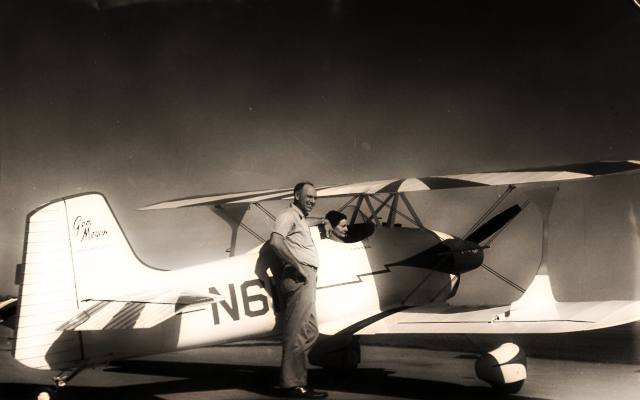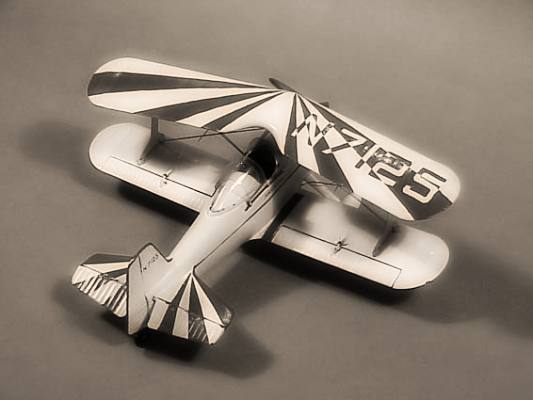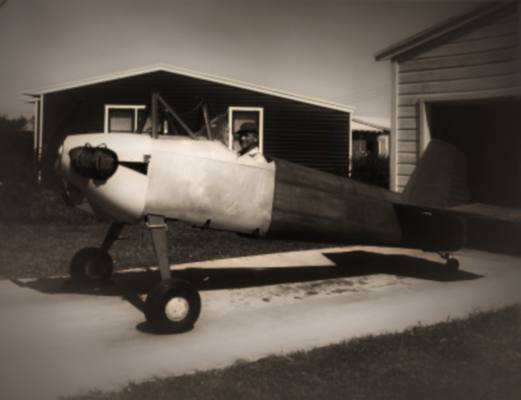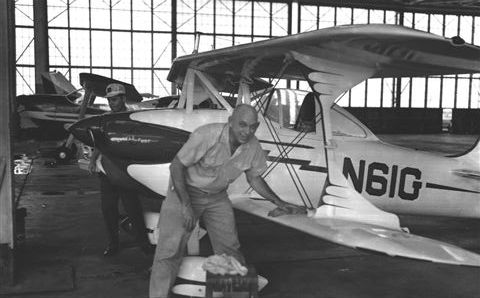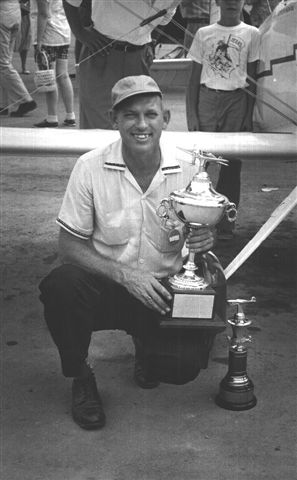At last I have some pictures of "Little Toot" to send you. I am well pleased with the way it turned out. I started this project about five years ago (see Experimenter for April, 1954 & September, 1955).
First I made up a set of drawings and then built a scale model, ½ inch to the foot scale, with full details as to construction, etc. The model is all metal with the same type of construction as the large one with the exception of the wings. The model has metal ribs and spars with silk covering, and the full scale ship has wood spars and ribs. The model even has a scale constructed engine also of metal. I believe it is a good idea to make a scale model of any ship the homebuilder has in mind - then he will know exactly how the full size counterpart will look when completed. Also many construction details can be worked out in a model.
Here are the dimensions of "Little Toot": Wingspan - 19 feet; Total length - 16 feet 6 inches; Wing area - 123 sq. ft.; Sweep back, upper wing - 8°; Lower wing, straight; Dihedral - 3° in lower wing only. Engine is 90 HP Continental.
Fuselage is metal monocoque from the cockpit aft; tube truss from the cockpit forward with metal cowling over same. Wings are spruce with 1/8 inch plywood ribs with 1/2 inch x 3/16 inch spruce cap strips and fabric cover.
The engine cowl is hand hammered of aluminum. Landing gear is Cessna with Cessna wheel pants. There are four flying wires and two landing wires on each side of the plane. It is stressed for a full 10 G's with plenty of beef in all of the fittings, flying wires, etc. I don't have to worry about it coming apart.
She is painted white with red trim and has "Little Toot" on the engine cowl. It has been through all the flight tests and came through with flying colors. There wasn't a thing that had to be changed - it performed beautifully from the first flight on. We rigged it and flew it and just had to bend the rudder tab a little. It trims for level flight with the elevator trim in neutral. It will top 127 MPH at 2000 feet and cruise at 110 at 2200 RPM. I timed it to 5000 feet with a 150 lb. pilot - 5 minutes and 20 seconds. It won't do that well with me though - I weigh 200 lbs. and the climb is about 800 feet per minute with me in it. Next year I would like to install a 135 or 150 HP Lycoming in it.
The ship has very good stall characteristics - breaks clean with plenty of warning and resumes flying as soon as pressure is released. It has been held in sustained spins and recovery is very rapid with only the pressure released from the controls. "Little Toot" stalls at 55 MPH and lands at the same speed. It is very easy to fly - has no bad characteristics. Its take-off run is about 200 feet and landing roll-out is about the same.
The plane is fully aerobatic and has done just about everything but sustained inverted flight which can't be done until I put an inverted system in it, but I think I'll wait now until I get a bigger engine in it. I am reworking all my blueprints to incorporate all the changes and modifications I made while building the plane. They will be available if someone wants a set - after I complete the revisions. In the revised drawings I will have an alternate fuselage method which will be a more simplified tube cover for those who prefer it to the more difficult monocoque truss with stringers and fabric method used on mine. Also I'll show a tube tail as an alternate to the metal cantilever on "Little Toot". I hope "Little Toot" and I will see "you-all" at the Fly-In this year.
George W. Meyer - EAA Experimenter - June 1957





